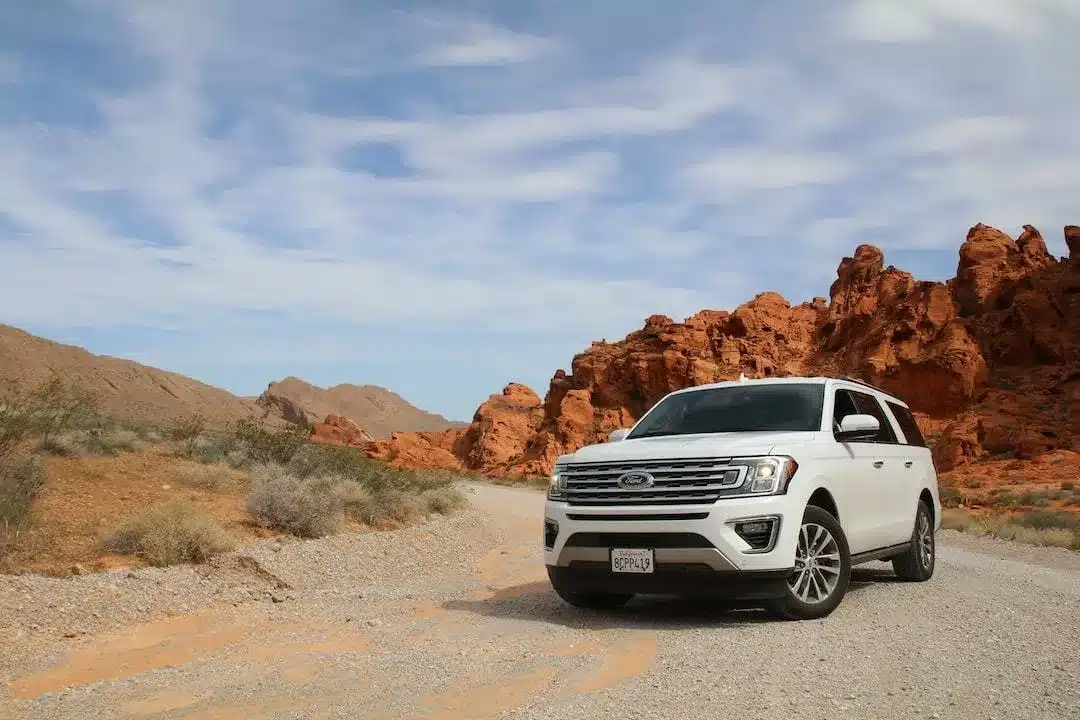How do you know if you have gap insurance? This is a question that many car owners grapple with.
The complexity of auto insurance policies can be daunting, leaving one in the dark about their coverage details.
But here’s the thing…
You don’t need to remain clueless. Understanding whether or not you’re covered by gap insurance is simpler than it seems.
This type of policy plays a crucial role when your vehicle gets totaled or stolen and there’s an outstanding loan balance to settle.
If this scenario sounds familiar, then knowing how to identify if you have gap insurance, becomes even more critical.
Table of Contents:
- How Do I Know If I Have Gap Insurance?
- What is Gap Insurance?
- Who Needs Gap Insurance?
- Understanding How Gap Insurance Functions
- What Are The Benefits Of Gap Insurance?
- How Much Does Gap Insurance Cost?
- Where Can I Purchase Gap Insurance?
- What Should I Consider Before Purchasing Gap Insurance?
- FAQs in Relation to How Do You Know if You Have Gap Insurance
- Conclusion
How Do I Know If I Have Gap Insurance?
Determining if you have gap insurance involves a few critical steps. Primarily, it requires careful review of your existing auto insurance policy or loan agreement.
Examine Your Insurance Policy
Request your current auto insurance provider to give you info about the coverage you have. Request a copy of the policy and look out for terms such as “gap” or “loan/lease payoff”. The presence of these phrases usually signifies that gap coverage is part of your plan.
If there’s any ambiguity in understanding whether this type of protection exists within the paperwork, make sure to reach out directly to the company for clarification. It’s important not just from an informed customer perspective but also aids better decision-making regarding financial liability and potential risks associated with vehicle ownership.
Contact Your Loan Provider
In certain cases when financing or leasing vehicles through dealerships or banks, they might include gap insurance immediately into package deals without explicit communication on their end. Hence, reaching out specifically asking about optional insurances intended to cover differences between what an insurer pays during total loss claims versus remaining loan balances can be beneficial.
The lender may further shed light on how much longer additional coverages like GAP would remain necessary based on factors including depreciation rates and outstanding balance amounts among other aspects involved.
What is Gap Insurance?
In the world of auto finance, gap insurance plays a crucial role. It’s not your typical car insurance policy; it serves to bridge the financial divide when unfortunate circumstances arise.
The primary function of this optional coverage is to shield vehicle owners from potential monetary liability if their cars depreciate faster than they can settle their loans or leases. This discrepancy between the owed amount and the actual cash value (ACV) is precisely what gap insurance covers.
Filling in The Financial ‘Gap’
If you find yourself facing an accident that totals your car or even theft, and you owe more on it than its current worth – this is where gap coverage marks its importance. Traditional auto policies only cover up to ACV as determined by insurers post-depreciation.
Your existing auto insurance may offer compensation for damages up to the depreciated value at best but falls short when there’s still an outstanding balance due on financing terms – here enters gap, also known as ‘guaranteed asset protection’.
A Safety Net Against Rapid Depreciation
It’s important to remember that standard comprehensive or collision policies do not always fully reimburse borrowers following total loss scenarios like thefts or severe accidents leaving them with significant debts despite no longer having usable vehicles.
- This predicament prompts many astute buyers who have taken out loans/leases for new cars to purchase gap insurance immediately upon acquisition. It acts as a safety net against potential financial pitfalls associated with rapid depreciation rates common among modern vehicles.
You might be wondering: “How do I know if I already have such protection?” To check whether you currently hold any form of guaranteed asset protection within your existing contract, review both your lease agreement and current car insurance provider details thoroughly before opting into additional plans.
Gap insurance is a financial lifesaver, bridging the monetary gap when your car depreciates faster than you can pay off your loan or lease. It’s not standard in auto policies but acts as a safety net against rapid depreciation. To know if you’re covered, check your existing contracts thoroughly.
Who Needs Gap Insurance?
The importance of gap insurance cannot be overstated for certain groups of vehicle owners. Specifically, those with high loan balances, new car buyers, lessees, and leaseholders, as well as borrowers with long-term loans, stand to benefit the most from this type of coverage.
1. Vehicle Owners With High Loan Balances
If you’re a vehicle owner who has taken out a significant loan amount for your purchase, it’s essential that you consider getting gap insurance immediately. Standard auto policies only cover the current market value of your car if it gets totaled or stolen – not what you still owe on your loan.
To better understand how this works and why having such an existing auto insurance policy could leave you in financial liability without adequate protection like GAP (Guaranteed Asset Protection) Insurance, check out more information provided by the Consumer Financial Protection Bureau.
2. New Car Buyers
New cars depreciate quickly; some models can lose up to 30% of their initial value within just one year according to CarFax. As such, rapid depreciation often leads to a ‘gap’ between what is owed on these vehicles versus their actual cash values when they are totaled or stolen early into ownership periods. New car buyers should also seriously contemplate adding optional insurances intended specifically for covering these gaps onto their traditional car insurance plans.
3. Lessees And Leaseholders
Lessees too need gap coverage since many leasing contracts require them to carry such insurances due to being responsible for paying off remaining lease payments even after total loss events involving leased vehicles occur. When entering into a leasing agreement, be sure to ask about the need for additional protections in case of any issues that may arise.
4. Borrowers With Long-Term Loans
Borrowers opting for long-term auto loans should consider acquiring gap insurance to provide financial protection in case of unforeseen circumstances such as accidents or theft. Due to the rapid depreciation of vehicles, especially in the early years of ownership, borrowers might face a situation where the insurance payout in the event of a total loss or theft is insufficient to cover the remaining loan balance.
This gap between the insurance settlement and the outstanding loan amount could leave borrowers responsible for payments on a vehicle they no longer possess. Gap insurance offers peace of mind by covering this potential disparity and is particularly relevant for borrowers with extended auto loan terms or those who made minimal down payments.
Gap insurance is a must-have for vehicle owners with high loan balances, new car buyers facing rapid depreciation, lessees and leaseholders bound by contract requirements, and borrowers with long-term loans. It’s your financial safety net when standard auto policies fall short.
Understanding How Gap Insurance Functions
Gap insurance, an optional insurance intended to protect vehicle owners from financial loss in certain scenarios, operates on a simple principle. It aims to cover the “gap” between your car’s actual cash value (ACV) and what you owe on it if the unfortunate happens – your car is stolen or declared a total loss after an accident.
The Role of Gap Coverage in Auto Financing
Your existing auto insurance policy typically pays out based on ACV at the time of the incident, which can be less than the loan balance due to depreciation. This situation could leave you with a hefty bill unless gap coverage plays its role.
A quality gap insurance immediately steps in when such circumstances arise, covering these unexpected costs and relieving any potential financial liability off your shoulders. Providers like Vantage Finance offer comprehensive solutions for independent dealerships that include reliable gap coverage plans.
Payout Mechanism of Gap Insurance
In cases where the insured asset, i.e., the vehicle, is totaled beyond repairable state or stolen, the initial claim settlement comes through the existing auto insurer who covers up to the Actual Cash Value limit under their standard policies, whether it’s good old-fashioned car insurance or something more comprehensive.
This payout, however, may not fully satisfy the outstanding loan amount, leading us towards invoking the benefits offered by GAP, aka Guaranteed Asset Protection provider, who takes care of the remaining dues, thus ensuring no additional burden falls upon the owner during this already stressful period post mishap involving the insured asset.
Maintaining Your Existing Gap Policy When Switching Insurers
If you decide to switch auto insurers while having an active GAP protection plan, rest assured as most providers ensure a seamless transition without affecting the current services provided under the original agreement, hence maintaining continuity amidst changes happening around them. So even if one decides to change their current car insurance provider, they should still continue enjoying the benefits offered under the respective GAP protection plan.
Gap insurance covers the financial “gap” between your car’s actual cash value and what you owe if it’s stolen or totaled. It steps in when regular auto insurance falls short due to depreciation, ensuring no extra burden during such stressful times. Even when switching insurers, most gap policies maintain continuity.
What Are The Benefits Of Gap Insurance?
The advantages of gap insurance may not be immediately apparent to all vehicle owners, but this form of coverage can serve as a significant financial safety net. Let’s delve into the key benefits that come with securing gap insurance.
A Shield Against Financial Liability
In cases where your car is taken or destroyed, you may be left owing more on the loan than what it’s worth currently. This happens because traditional auto policies only cover the actual cash value (ACV) of your vehicle at its time of loss – they don’t consider its original purchase price or outstanding loan balance.
This scenario gives rise to what we call “the gap”. Gap insurance offers coverage for this difference and ensures you’re not left holding a hefty bill for an asset no longer in existence. It essentially bridges any disparity between what an existing auto insurance policy pays based on ACV and the remaining dues owed to lenders.
Budget Stability Amid Unforeseen Circumstances
An unexpected event like theft or total damage could disrupt monthly budgets due to sudden costs associated with replacing a vehicle and settling unpaid loans. With gap coverage already in place, policyholders have one less monetary worry during such stressful times since their car insurance works alongside their gap plan, providing comprehensive protection against potential losses.
Potential Long-Term Savings
You might initially assume that adding another layer of protection will substantially increase monthly premiums; however, when compared with possible out-of-pocket expenses without it, purchasing gap insurance immediately after acquiring a new automobile could save thousands over time if unfortunate events occur early during ownership when depreciation rates are highest and standard car insurance falls short.
In summary, while some view it merely as another cost added onto already pricey financing plans, others see it as a peace-of-mind investment protecting them from unforeseen circumstances down the line.
Note: Always remember before switching auto insurance providers altogether, ensure thorough comparison among various current car insurers’ offerings, including factors such as how much additional coverage is needed considering other types present like collision
Gap insurance acts as a financial safety net, covering the difference between your car’s actual cash value and remaining loan balance if it’s stolen or totaled. It offers budget stability during unexpected events and could lead to long-term savings by mitigating hefty out-of-pocket expenses. Considered by many as an investment in peace of mind, it shields you from unforeseen liabilities.
How Much Does Gap Insurance Cost?
The cost of gap insurance can vary greatly depending on the type and value of your vehicle, the amount of coverage required, and where you purchase it. While generally affordable for most car owners, costs can fluctuate significantly between providers.
Determining Factors in Gap Insurance Costs
Your vehicle plays a significant role in determining how much you’ll pay for gap insurance. More expensive cars typically lead to higher premiums as they represent greater financial risk for insurers. If an accident occurs or theft happens, replacing such vehicles would require substantial payouts from them.
The level of coverage desired also impacts the price tag on your gap insurance policy. If there’s a larger ‘gap’ because you owe more than what your car is worth due to depreciation, then expect slightly elevated monthly premiums.
Purchasing Options: Where To Buy And How It Affects Price
You have multiple avenues when deciding where to buy gap insurance. Many choose their current auto insurer, while others switch auto insurance providers altogether or find quality gap offers through insurance providers.
If purchased via traditional channels like existing auto insurers or mainstream car companies, this could increase annual premiums around $20-$30, depending upon other details within one’s overall policy. However, specialized lenders might offer different rates, so always compare before committing.
Avoid Paying Higher Premiums With These Tips & Tricks
- To avoid paying inflated prices, make sure that all terms are clearly understood prior to signing up – including whether deductibles apply, and how claims are handled. Not every policy operates identically. Also, consider opting out once the loan balance aligns with the actual value, saving money long-term without sacrificing protection during critical early years post-purchase.
- Ensure that any potential increases don’t exceed affordability thresholds based on income levels.
- Regularly review options, especially at renewal times – comparing quotes may reveal cheaper options.
Gap insurance cost hinges on your vehicle’s type and value, coverage level, and purchase source. Pricier cars and larger ‘gaps’ due to depreciation can up the premiums. While typically affordable via traditional insurers or car companies, specialized lenders may offer different rates – so shop around. Understand all terms before signing up to avoid inflated prices.
Where Can I Purchase Gap Insurance?
The decision to purchase gap insurance is significant as it can protect vehicle owners from financial liability. Therefore, it is essential to obtain quality gap insurance from trusted providers.
Purchasing From Car Insurance Providers
You can usually buy gap insurance directly through your existing auto insurance policy provider. Many leading car insurers offer this as an add-on coverage, allowing you to seamlessly integrate it into your monthly premiums.
If the terms or pricing offered by your current insurer are unsatisfactory, consider switching auto insurance providers. Another company might have more competitive rates or superior customer service offerings.
Dealerships and Financial Institutions
In addition to traditional car insurers, many dealerships also provide customers with the option of purchasing GAP coverage when financing a new vehicle at the point of sale. However, be aware that dealership-offered policies may come with higher premiums compared to those sold by regular insurers.
Lending institutions like banks and credit unions sometimes offer their own form of GAP protection for loans they issue. These may carry additional costs that should be carefully considered before committing yourself.
What Should I Consider Before Purchasing Gap Insurance?
Before you decide to purchase gap insurance, there are a few crucial factors that need careful consideration. These include your coverage needs, existing auto insurance policy, and the affordability of adding extra protection.
Determining Your Coverage Needs
The first step towards making an informed decision about purchasing gap insurance is understanding how much coverage you actually require. If the amount owed on your car loan exceeds its current market value or actual cash value (ACV), then having this type of financial safety net becomes imperative. The National Association of Insurance Commissioners (NAIC) offers valuable resources for vehicle owners looking to buy quality gap insurance based on their specific circumstances.
Evaluating Your Existing Auto Insurance Policy
A thorough review of your existing auto insurance policy can reveal if it already includes some form of Guaranteed Asset Protection, also known as GAP. Many traditional car insurers offer this as part of their services; hence, it’s wise to check with them before exploring other options.
Weighing Affordability Against Benefits
In addition to determining whether you need additional coverages like GAP, consider also if these added protections fit into your budget constraints comfortably while offering substantial benefits in return, such as avoiding paying higher premiums later when disaster strikes unexpectedly resulting in total loss due to theft or an accident where regular comprehensive collision insurances fall short in providing adequate compensation.
If, after evaluating all these aspects carefully, you conclude that buying GAP marks the right move financially speaking, then explore both through your current insurer and independent providers specializing in finance solutions for dealerships across America. For example, Vantage Finance has a proven track record of serving the independent dealer community effectively and efficiently.
Before diving into gap insurance, assess your coverage needs and scrutinize your existing auto policy. If you owe more on your car than its current value, this safety net becomes crucial. Check affordability against benefits before making the leap – remember, it’s not just about avoiding higher premiums down the line.
FAQs in Relation to How Do You Know if You Have Gap Insurance
What is the difference between insurance and gap insurance?
Standard auto insurance covers the actual cash value of your vehicle. Gap insurance, on the other hand, pays the remaining balance of your loan if your car is totaled or stolen and you owe more than its depreciated value.
Is loan lease payoff the same as gap insurance?
No, they are not identical. Loan lease payoff may cover a percentage of what you owe to your lender if a loss occurs, while gap insurance typically covers the full amount owed.
Does gap insurance cover negative equity?
Yes, one of the main purposes of gap insurance is to cover negative equity in the event of a total loss where you owe more than what your car is worth.
How to get a gap insurance refund from Toyota?
To obtain a refund for unused portions of Toyota’s GAP policy after paying off your loan early or selling the vehicle, contact their customer service with the necessary documentation proving the completion of payments or sale.
Conclusion
Gap insurance is a safety net for your auto finance journey. Gap insurance provides a safeguard for your car loan, closing the discrepancy between what you owe and the actual value of your vehicle if it’s destroyed or stolen.
Determining if you have this coverage involves checking your current policy, lease terms, or loan agreement.
Purchasing options are diverse – from major insurers to specialized providers.
Read More Information:






